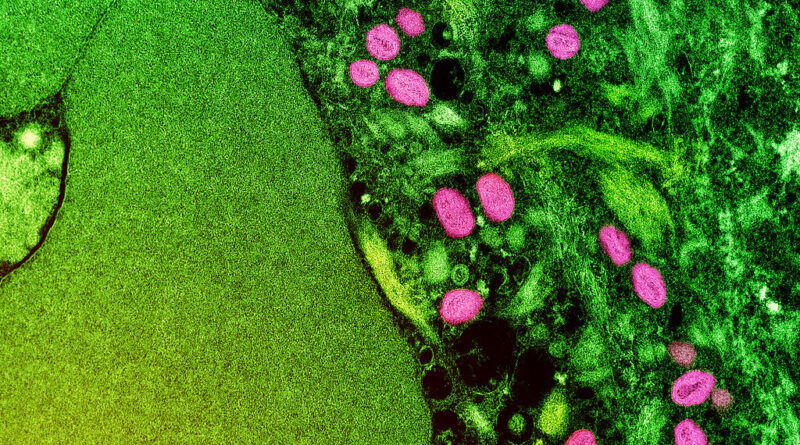Monkeypox
Monkeypox: Unraveling the Enigma of a Rare Viral Disease
Introduction
In the realm of infectious diseases, monkeypox stands as a mysterious and relatively rare entity, captivating the attention of both scientists and the general public. This article delves into the intricate world of monkeypox, exploring its origins, transmission, symptoms, and ongoing efforts to understand and manage this viral threat.
Monkeypox Origins: A Puzzling Beginnings
Monkeypox, a member of the Orthopoxvirus genus, is closely related to the more infamous variola virus—the causative agent of smallpox. The virus was first identified in 1958 when outbreaks occurred among monkeys kept for research. Interestingly, the initial human case of monkeypox was reported in 1970 in the Democratic Republic of the Congo. The virus has since manifested in sporadic outbreaks across Central and West African regions.
Transmission Dynamics: Bridging the Species Gap
Monkeypox primarily spreads to humans through animals, with rodents serving as natural hosts. The virus can also be transmitted from human to human, sparking concerns about its potential for wider outbreaks. The intricate web of transmission involves direct contact with the bodily fluids, skin lesions, or respiratory droplets of an infected animal or person.
The Clinical Picture: Unmasking Monkeypox Symptoms
The symptoms of monkeypox are reminiscent of both smallpox and chickenpox, making it a diagnostic challenge. The incubation period typically ranges from 5 to 21 days, with the onset marked by fever, headache, muscle aches, and exhaustion. A distinctive rash then emerges, progressing to pustules and scabbing. While monkeypox is usually a self-limiting disease, severe cases can occur, particularly in individuals with weakened immune systems.
Monkeypox Outbreaks: A Global Concern
Despite its limited geographic prevalence, monkeypox has gained international attention due to sporadic outbreaks and the potential for the virus to breach borders. In recent years, cases have been reported outside of Africa, raising concerns about the global reach of this enigmatic disease.
Diagnosis and Treatment: Navigating the Challenges
Diagnosing monkeypox presents challenges, given its similarity to other poxviruses. Laboratory tests, including polymerase chain reaction (PCR) assays and viral culture, are essential for accurate identification. While there is no specific antiviral treatment for monkeypox, supportive care, and smallpox vaccination have shown efficacy in mitigating the severity of the disease.
Prevention Strategies: Vaccination and Public Health Measures
Preventing monkeypox outbreaks necessitates a multi-faceted approach. Vaccination campaigns, primarily employing the smallpox vaccine, have proven effective in reducing the severity and spread of monkeypox. Additionally, public health measures, including surveillance, case identification, and contact tracing, play a crucial role in containing outbreaks and preventing further transmission.
Emerging Research: Unlocking Monkeypox Mysteries
The limited understanding of monkeypox has spurred increased research efforts to unravel the mysteries surrounding its transmission dynamics, reservoir hosts, and genetic makeup. Genomic studies aim to enhance our understanding of the virus’s evolution, potentially shedding light on its origins and providing insights into future prevention and control strategies.
Global Collaboration: A Unified Front Against Monkeypox
The global nature of infectious diseases requires collaborative efforts to tackle emerging threats. Organizations such as the World Health Organization (WHO) and the Centers for Disease Control and Prevention (CDC) work in tandem with national health agencies to monitor, assess, and respond to monkeypox outbreaks. International cooperation is essential for the development of effective prevention and control strategies.
Monkeypox in the Context of One Health
Monkeypox serves as a poignant reminder of the interconnectedness of human, animal, and environmental health. The One Health approach, emphasizing the interconnectedness of these three domains, is instrumental in understanding and managing diseases that traverse the human-animal-environment interface. The study of monkeypox necessitates collaboration between veterinary, medical, and environmental professionals to comprehensively address the complexities of this viral threat.
Conclusion: Navigating the Unknown
Monkeypox, with its mysterious origins and complex transmission dynamics, continues to pose challenges to the global health community. As researchers strive to unlock the secrets of this rare viral disease, the importance of international collaboration, effective prevention strategies, and a One Health approach cannot be overstated. In the face of the unknown, the pursuit of knowledge and the development of robust public health measures stand as our best defenses against the enigma of monkeypox.
